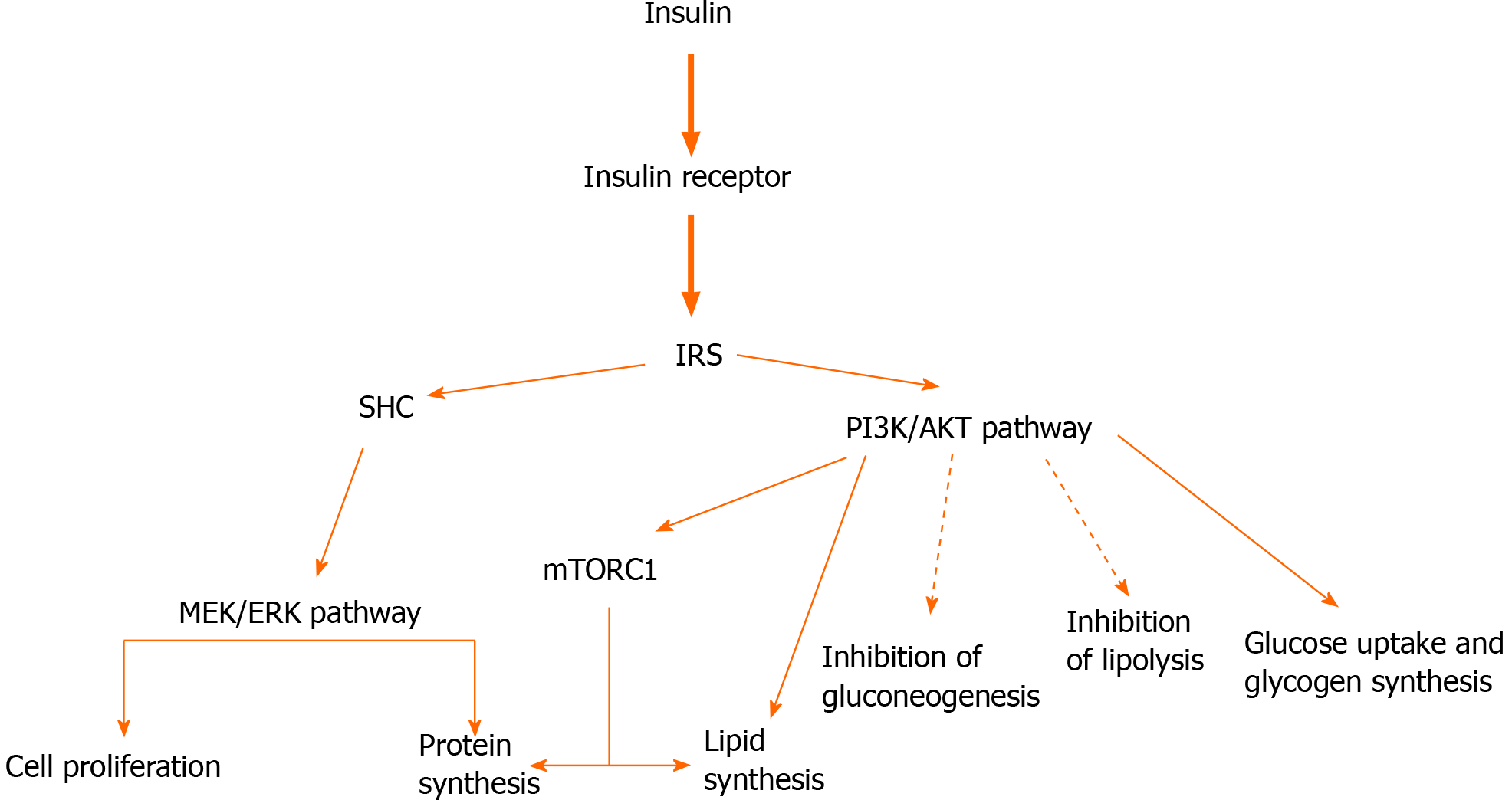Copyright
©The Author(s) 2021.
World J Diabetes. May 15, 2021; 12(5): 616-629
Published online May 15, 2021. doi: 10.4239/wjd.v12.i5.616
Published online May 15, 2021. doi: 10.4239/wjd.v12.i5.616
Figure 1 A brief scheme of the insulin signaling pathway under physiological conditions.
After insulin binds to its own receptor, several pathways are activated/inactivated, resulting in an anabolic state of insulin. The autophosphorylation of insulin receptor tyrosine kinase is followed by tyrosine phosphorylation of insulin receptor substrate. The phosphatidylinositol-3-kinase/serine/threonine-specific protein kinase B (AKT) signaling pathway promotes glucose uptake and glycogen and lipid synthesis while inhibiting hepatic gluconeogenesis and lipolysis. Moreover, AKT kinases activate mechanistic target of rapamycin complex 1, which promotes de novo synthesis of proteins and lipids. An additional insulin signaling pathway via Src homology 2 domain-containing transforming proteins and the mitogen-activated protein kinase/extracellular signal-related kinase pathway promotes cell proliferation and protein synthesis. Dotted lines represent inhibition, and solid lines represent stimulation/activation. IRS: Insulin receptor substrate; SHC: Src homology 2 domain-containing transforming proteins; MEK: Mitogen-activated protein kinase; ERK: Extracellular signal-related kinase; PI3K: Phosphatidylinositol-3-kinase; AKT: Serine/threonine-specific protein kinase B; mTORC: Mechanistic target of rapamycin complex.
- Citation: Unluhizarci K, Karaca Z, Kelestimur F. Role of insulin and insulin resistance in androgen excess disorders. World J Diabetes 2021; 12(5): 616-629
- URL: https://www.wjgnet.com/1948-9358/full/v12/i5/616.htm
- DOI: https://dx.doi.org/10.4239/wjd.v12.i5.616









